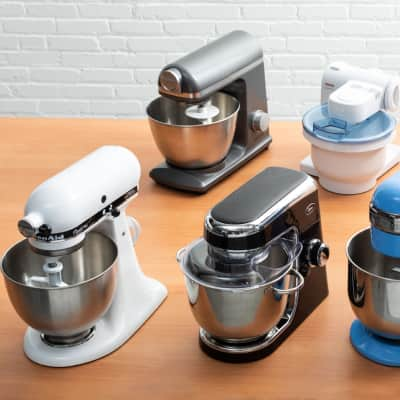When you buy cream for whipping, you have two options: heavy cream (also called heavy whipping cream) and whipping cream (also called light whipping cream).
Which Cream Is Best for Whipping?
Published Dec. 3, 2019.

Their chief distinction is fat.
Per the U.S. Food and Drug Administration, heavy cream must be at least 36 percent fat, while whipping cream needs to be just 30 percent fat.
That didn't sound like a big difference to us, so we decided to whip the two types and compare the results.
Since creams can also vary in how they're processed—most are ultra-pasteurized at a high temperature to prolong shelf life, but some are simply pasteurized—we wanted to compare those differences as well.
Sign up for the Cook's Insider newsletter
The latest recipes, tips, and tricks, plus behind-the-scenes stories from the Cook's Illustrated team.
The Test: Heavy Cream vs. Whipping Cream
What we tested: Pasteurized heavy cream, ultra-pasteurized heavy cream, and ultra-pasteurized whipping cream
What we did: We whipped each cream in a stand mixer and compared the flavor and texture of the results. We also evaluated their staying power by suspending the whipped creams in fine-mesh strainers over bowls and measuring how much liquid each lost over the course of 5 hours.

The Results
Heavy cream produced a more luxuriously thick whipped cream than whipping cream—and had a lot more staying power. In fact, toppings made with whipping cream lost five times the amount of water as toppings made from higher fat heavy cream. Fat helps stabilize the air bubbles in whipped cream and prevents free water from moving very far. So the more fat in the cream, the greater the foam’s stability and the thicker its texture.
The type of pasteurization also led to noticeable differences in the whipped creams.
Pasteurized heavy cream had a markedly more complex, sweet dairy flavor than the ultra-pasteurized creams, which tasted “flat” and “plain” by comparison. Ultra-pasteurization also thins out the dairy and damages its ability to hold air, so manufacturers must add thickeners and stabilizers.
The Takeaway
BEST CHOICE: Pasteurized heavy cream
This product, which tends to have the most fat of any cream in the dairy aisle, is our favorite choice for whipped cream. We love its luxuriously thick texture and rich, full dairy flavor. Though it’s not available in all supermarkets, it’s worth seeking out.
SECOND BEST: Ultra-pasteurized heavy cream
A good runner-up to pasteurized heavy cream for making thicker toppings and pastry fillings, since it whips up to a relatively thick, lush texture and holds its shape well. But it won’t have quite the same sweet dairy complexity.
GOOD FOR CERTAIN APPLICATIONS: Whipping cream
This product makes for a light, ephemeral whipped cream and is only suitable in applications that you plan to serve immediately—say for strawberry shortcake or a sundae.




